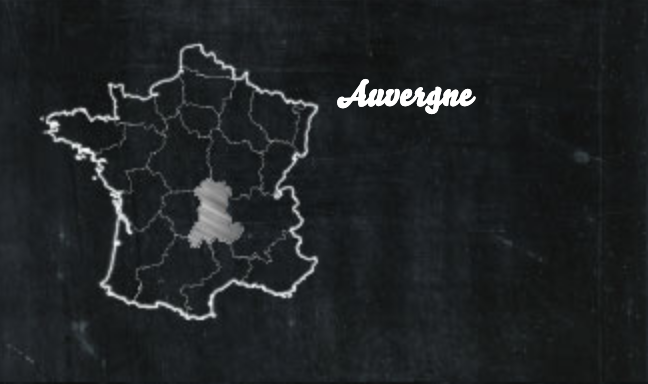It is said that Cantal has existed for 2,000 years. It is also said that it is a natural-born rebel. Cantal is a rustic cheese, modelled on the nature of the land it comes from, the mountains of Auvergne, sculpted by wind and erosion.
Cantal AOC

Origin
Characteristics
– AOC since 1956.
– Hard, uncooked pressed cheese.
– 45% minimum fat content.
– Three sizes have been authorised by the AOC: the fourme de Cantal (40 kg, diameter of 40 cm and 45-cm thick), the petit Cantal (20 kg, size reduced in proportion) and the cantalet (10 kg).
– Milky flavour.
– The cheese is slightly marbled, with a rind that ranges from white-grey for a young cheese to golden brown for an older cheese.
– Production: 17,500 tonnes.
Gastronomie
Cantal goes exceptionally well with red fruits, grapes, apples, nuts, and with light and fruity red wines like Beaujolais.
The famous Auvergne dish truffade is made with potatoes crushed with lard and either a young Cantal or Tomme cheese.
Production
Cantal is the only cheese that is salted “in the mass”: the curd grains are pressed in order to completely remove the whey. This is how Tomme Fraîche is made, which is used to make truffade. The Tomme is ground and then salted before being pressed into a mould covered with a linen cloth. The moulds are then pressed for several days. Ageing lasts at least 30 days in order to get young or “doux” Cantal, whose rind is a light white colour. After at least 70 days of care (rubbings and turnings) in a cellar, a thick, buttercup-coloured rind starts to form, after which time the Cantal is called “entre-deux” or “doré”. A much longer ageing (more than six months) produces an “old” or “caractère” Cantal, thanks to the work of minuscule cheese mites.
Cantal is the fraternal twin of Salers cheese, which is made by the farmers themselves during the months of summer pasturing. Cantal is only cut horizontally and vertically in such a way that each piece has a bit of rind.
Cantal is the most ancient of our cheeses. In book 11 of his tome “Natural History”, Pliny the Elder refers to “the cheeses from Arvesnes and Gévaudan, which are well-liked in Rome.” In 1600, Olivier de Serres lists it again in his work “Théâtre d’agriculture et ménage des champs” (“The Theatre of Agriculture and the Rural Household”). It was once called “fourme of Salers” as a tribute to the shape of the drum used for the bourrée dance and to the milk of Salers cows. It was also used as a bartering currency: a wheel of cheese for a cask of wine.
Émile Duclaux (1840–1904), one of Pasteur’s students, had an estate in Aurillac and contributed immensely to the economic development of the Cantal region by working towards modernising regional cheesemaking techniques.
Production Area
Auvergne and the mountains of Cantal: in other words, the Cantal department and 41 surrounding villages. It is truly the greenest part of the Haute-Auvergne, with fertile pasturing that is criss-crossed by rivers. It is the traditional region for Salers cows, a rustic breed with a beautiful red coat and impressive horns.
In the 1950s in Saint-Flour, the regional flora was lauded for its unique aromas, those of liquorice, gentian, windflowers, arnica, and blueberries, giving the milk that would later be made into Cantal its unique flavour.